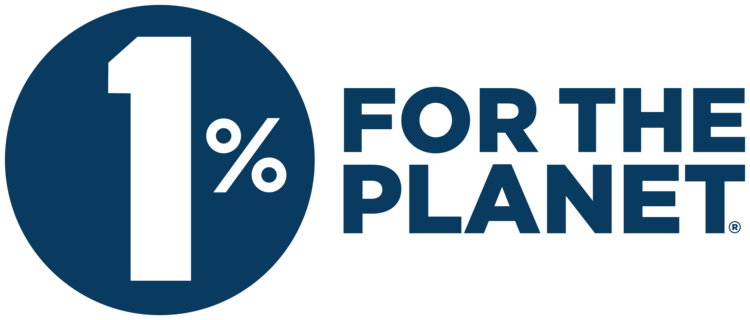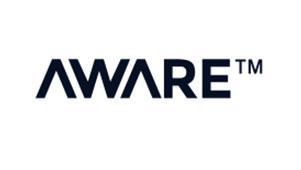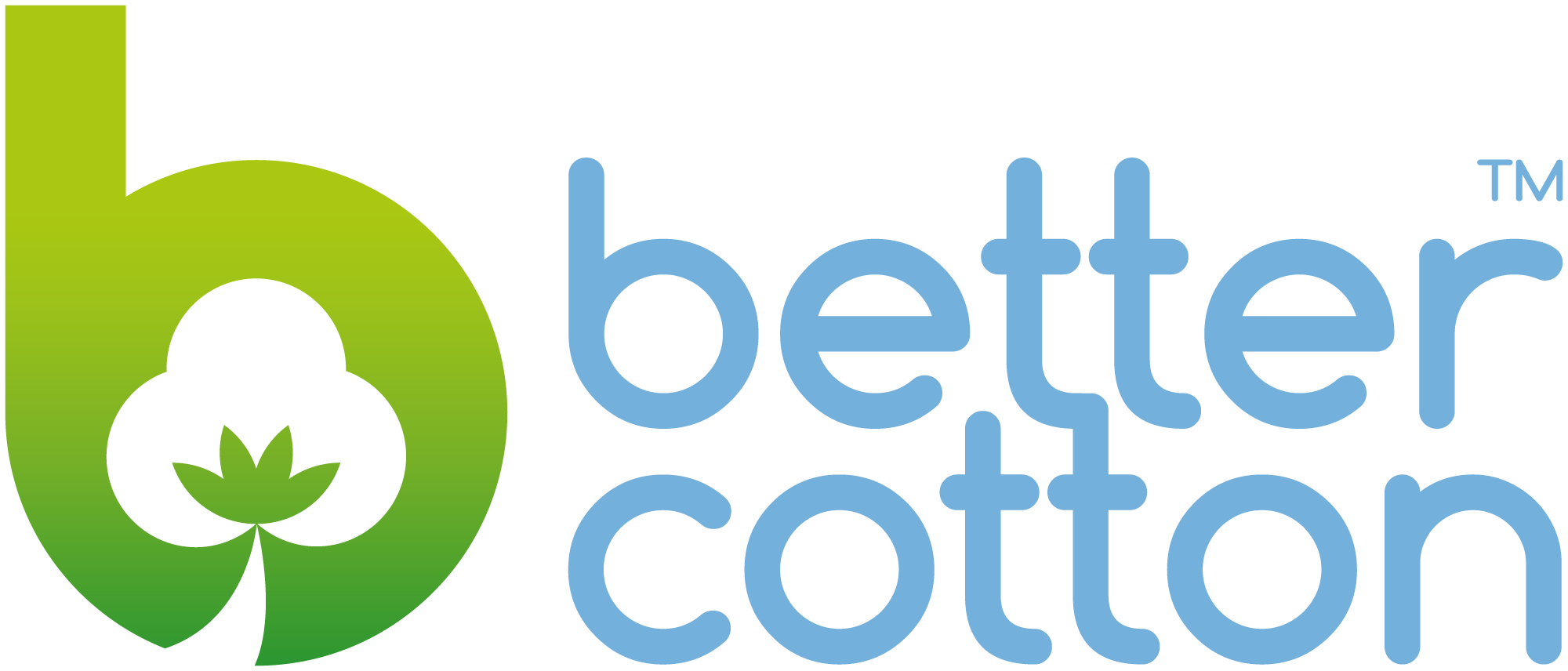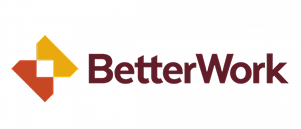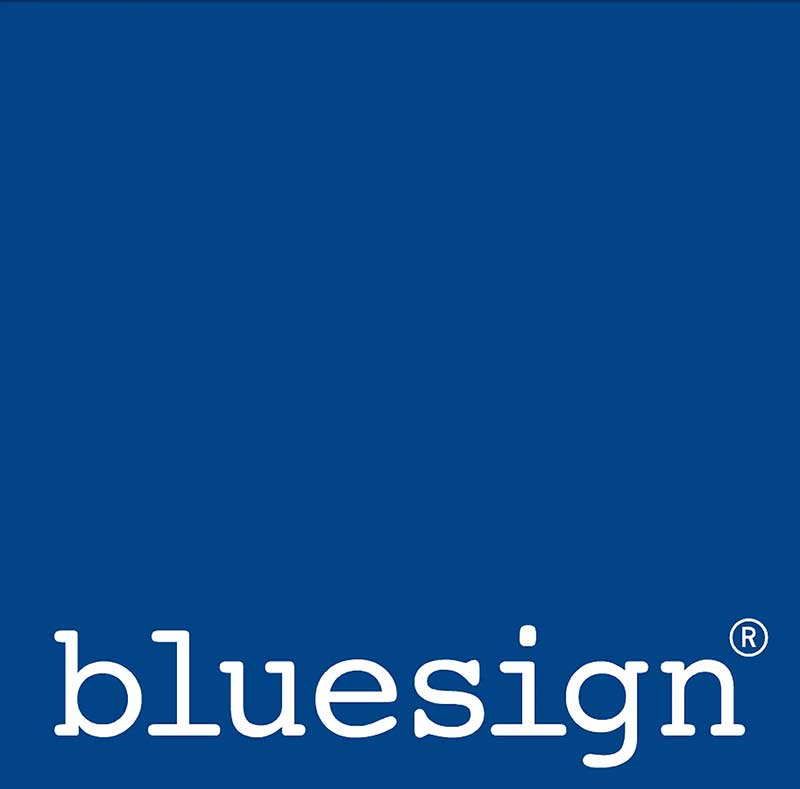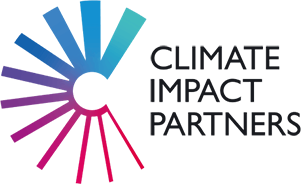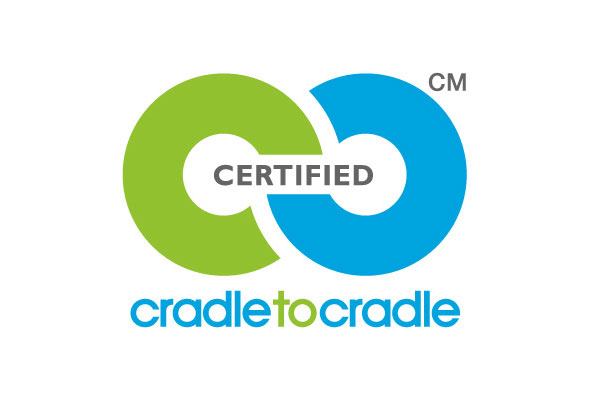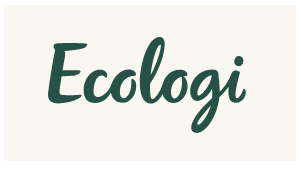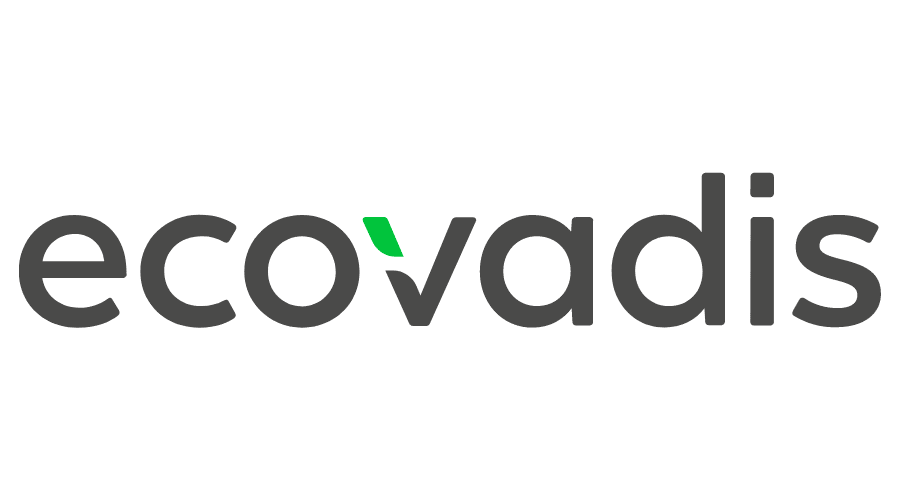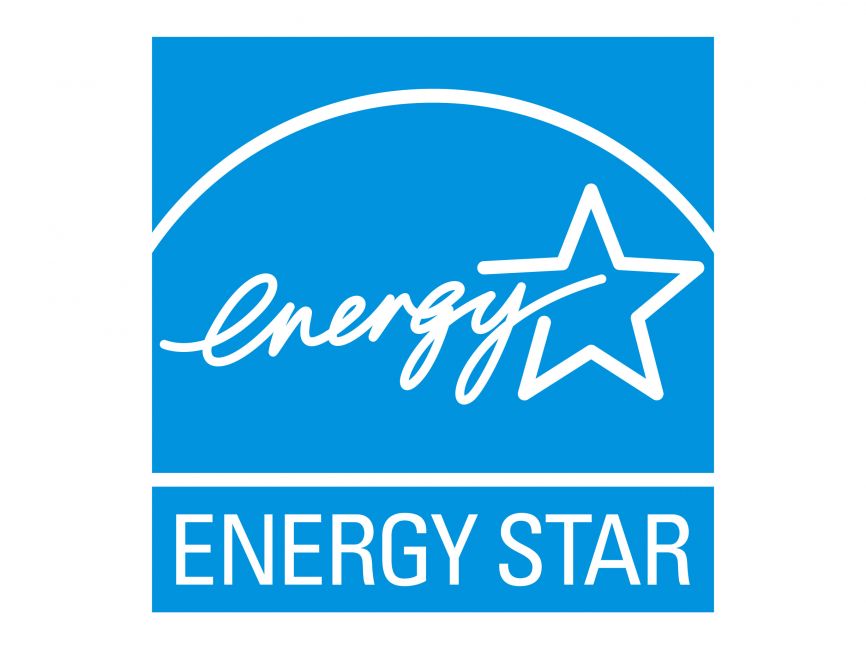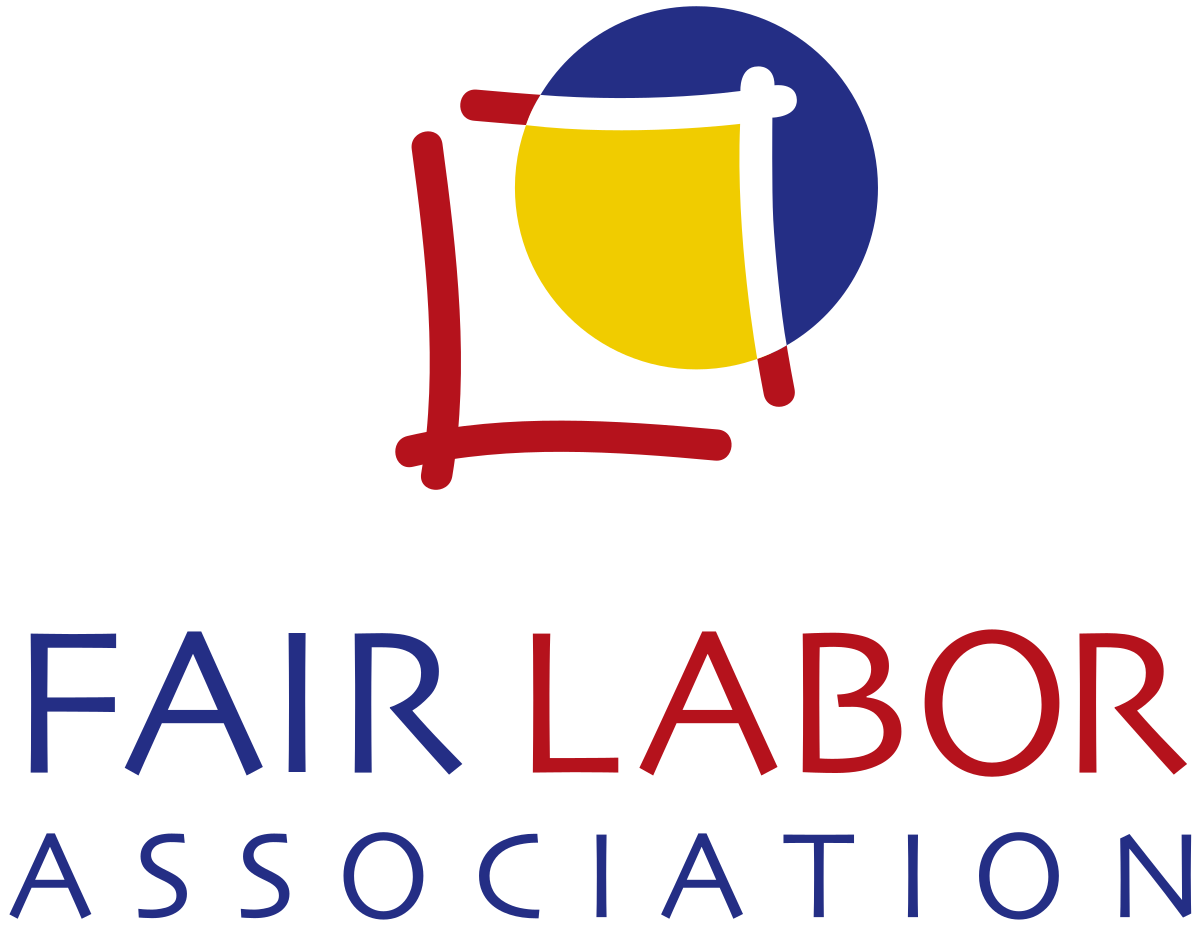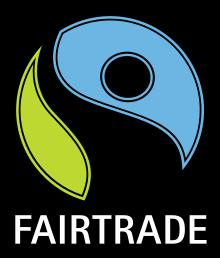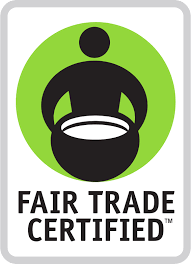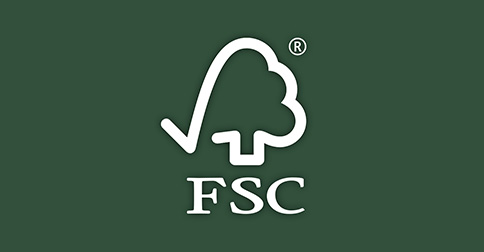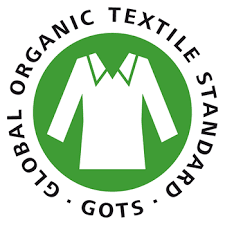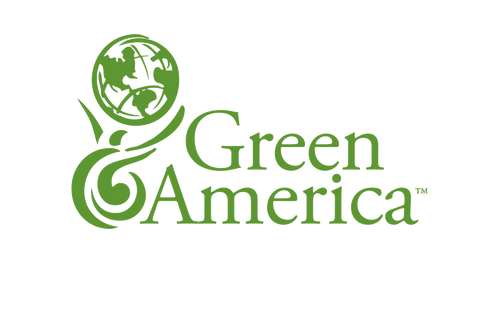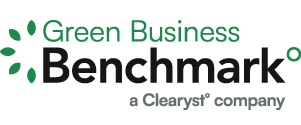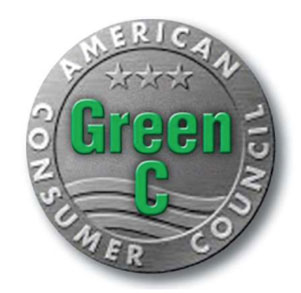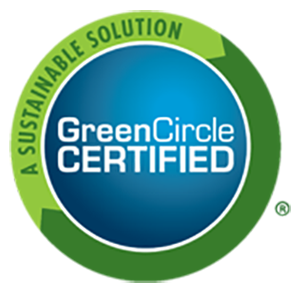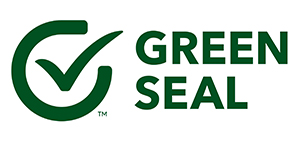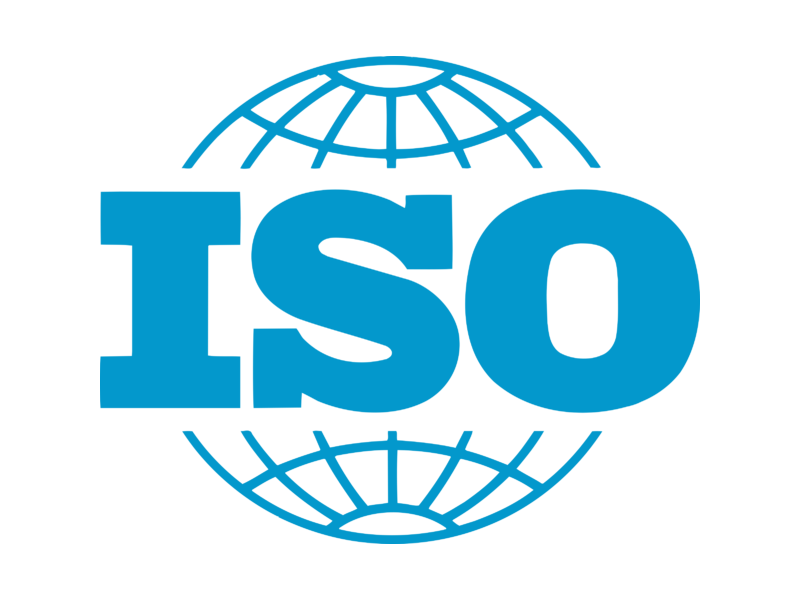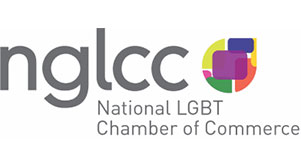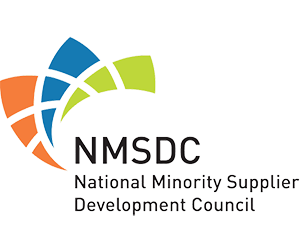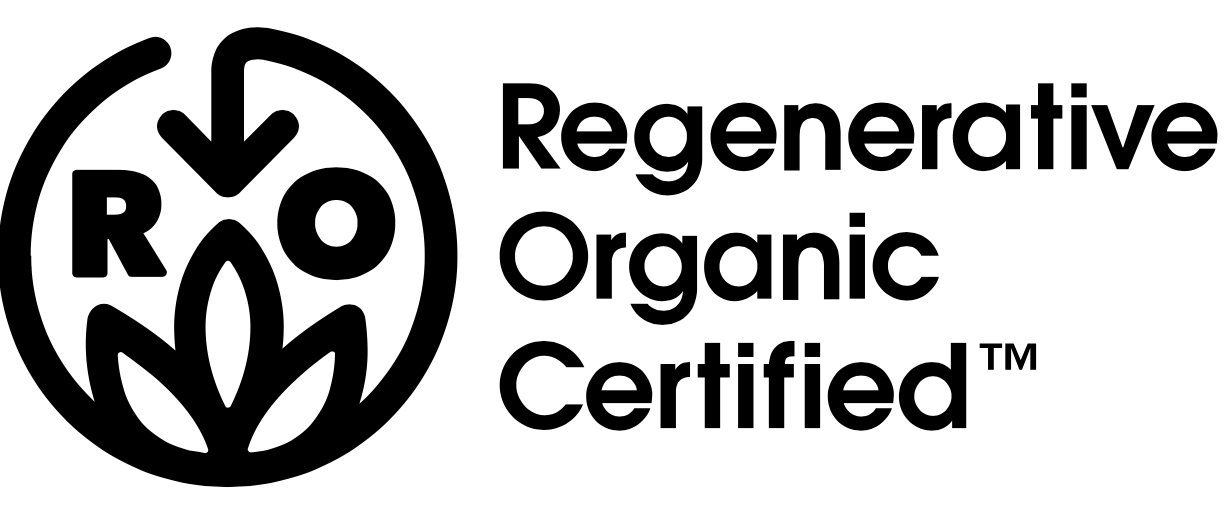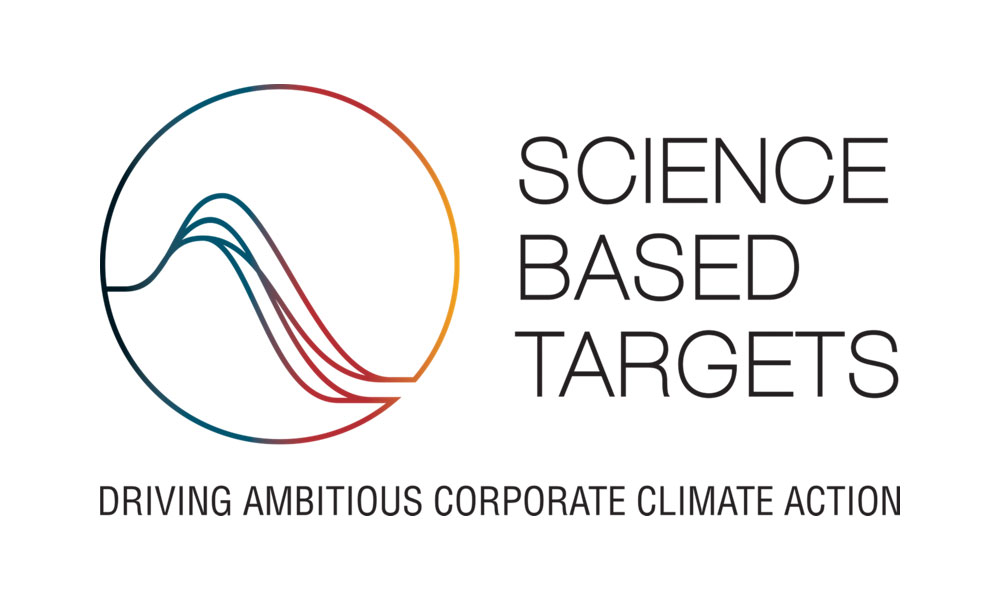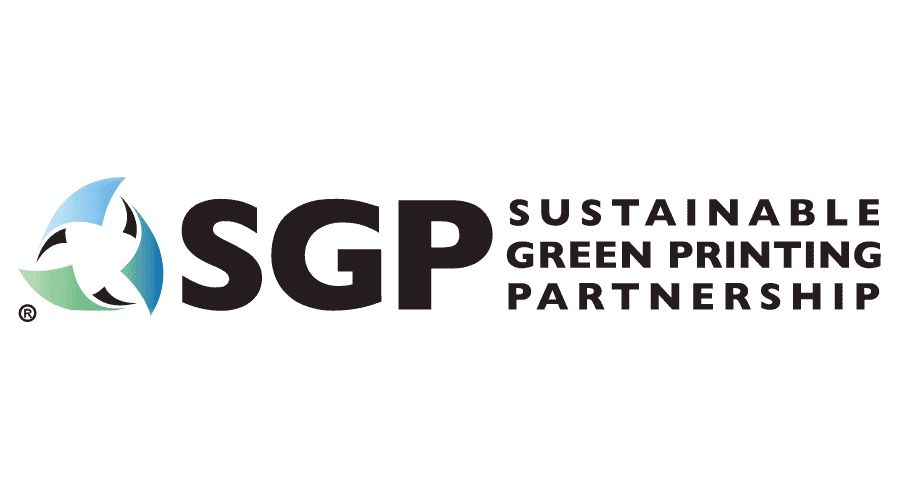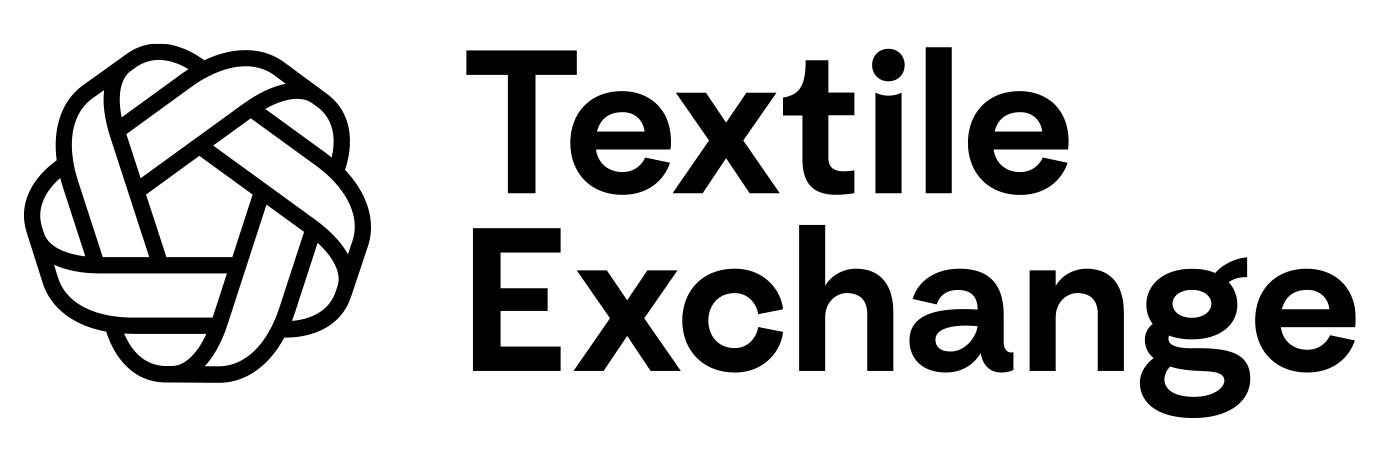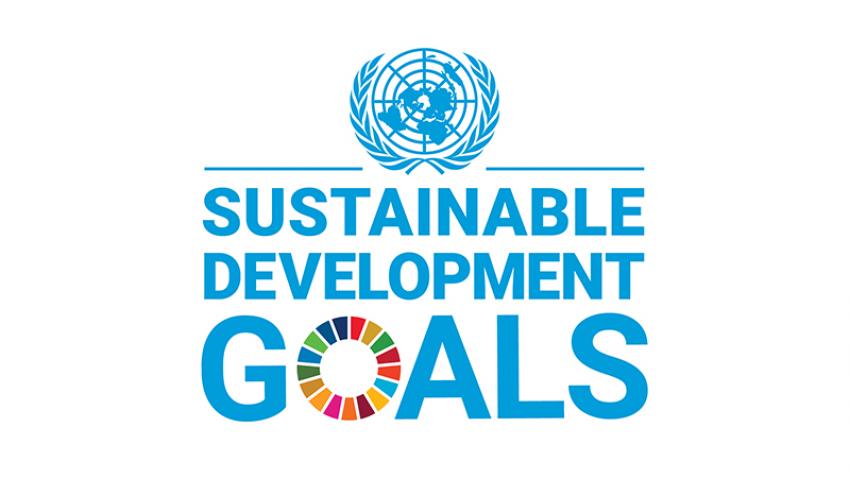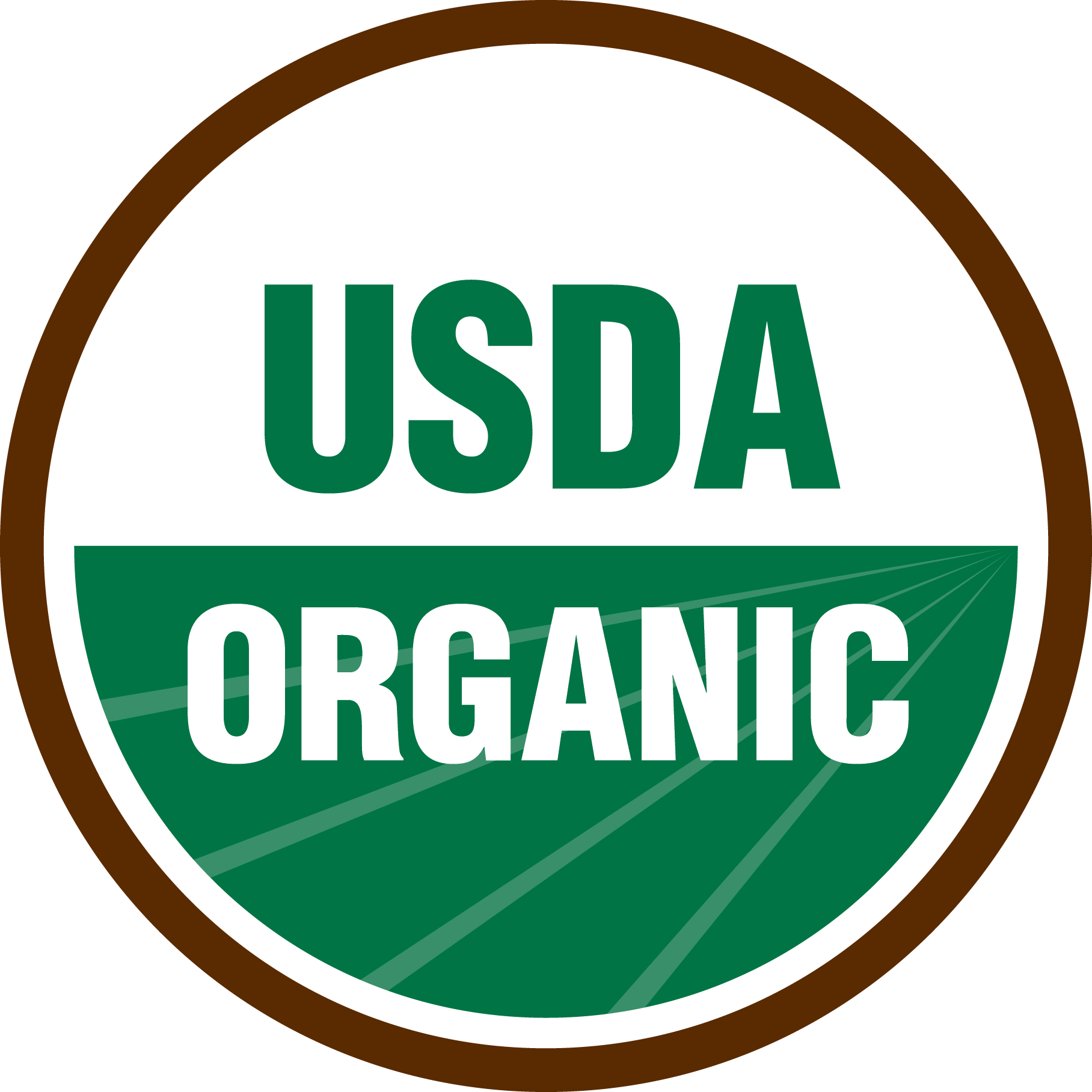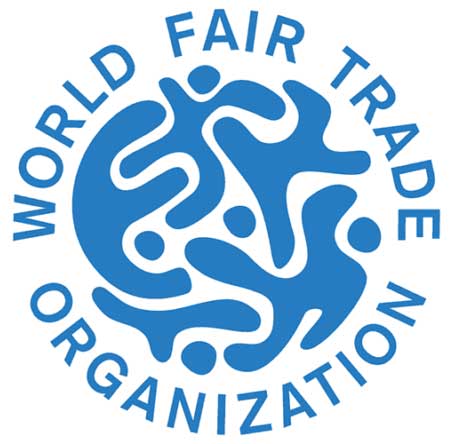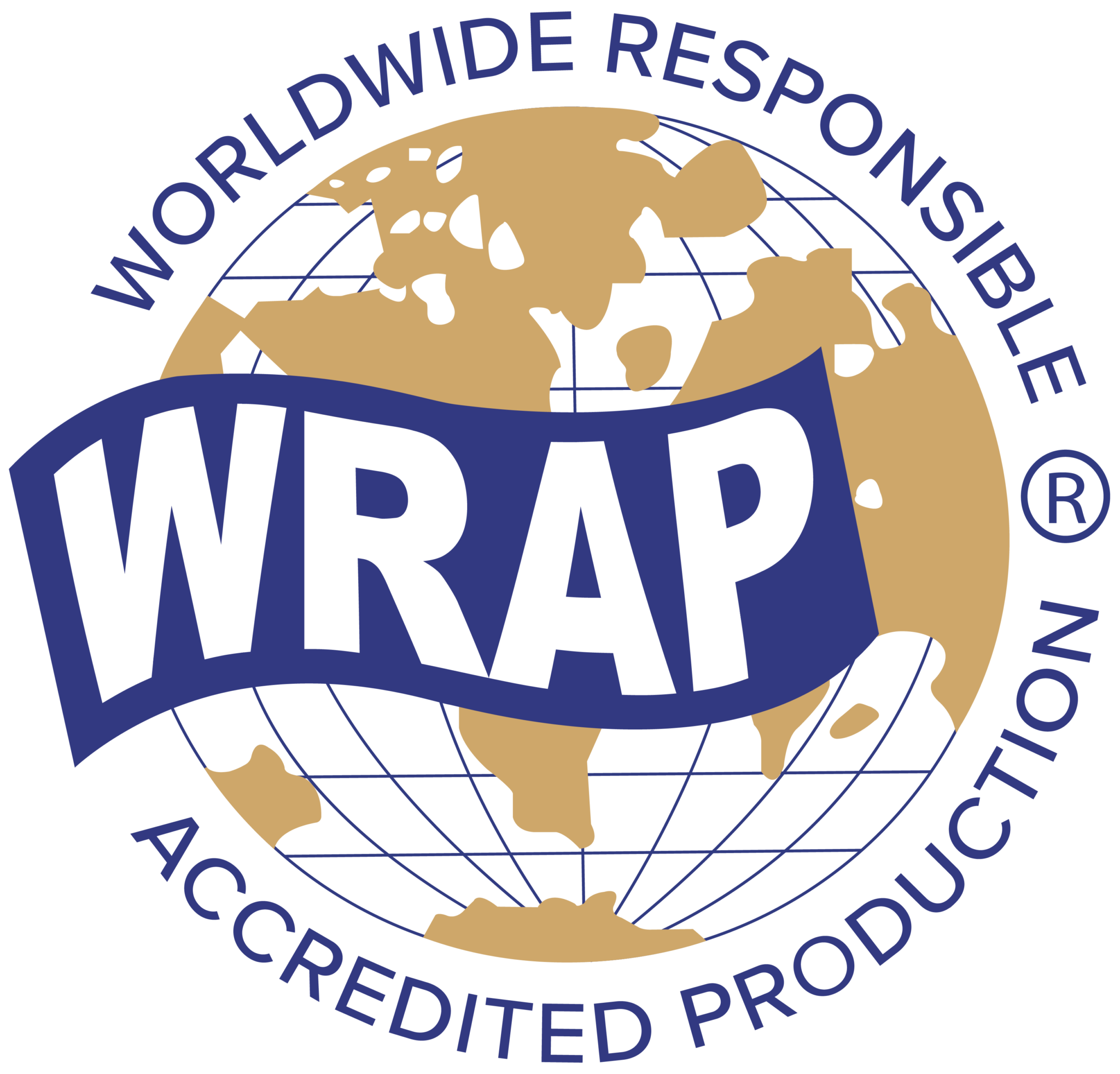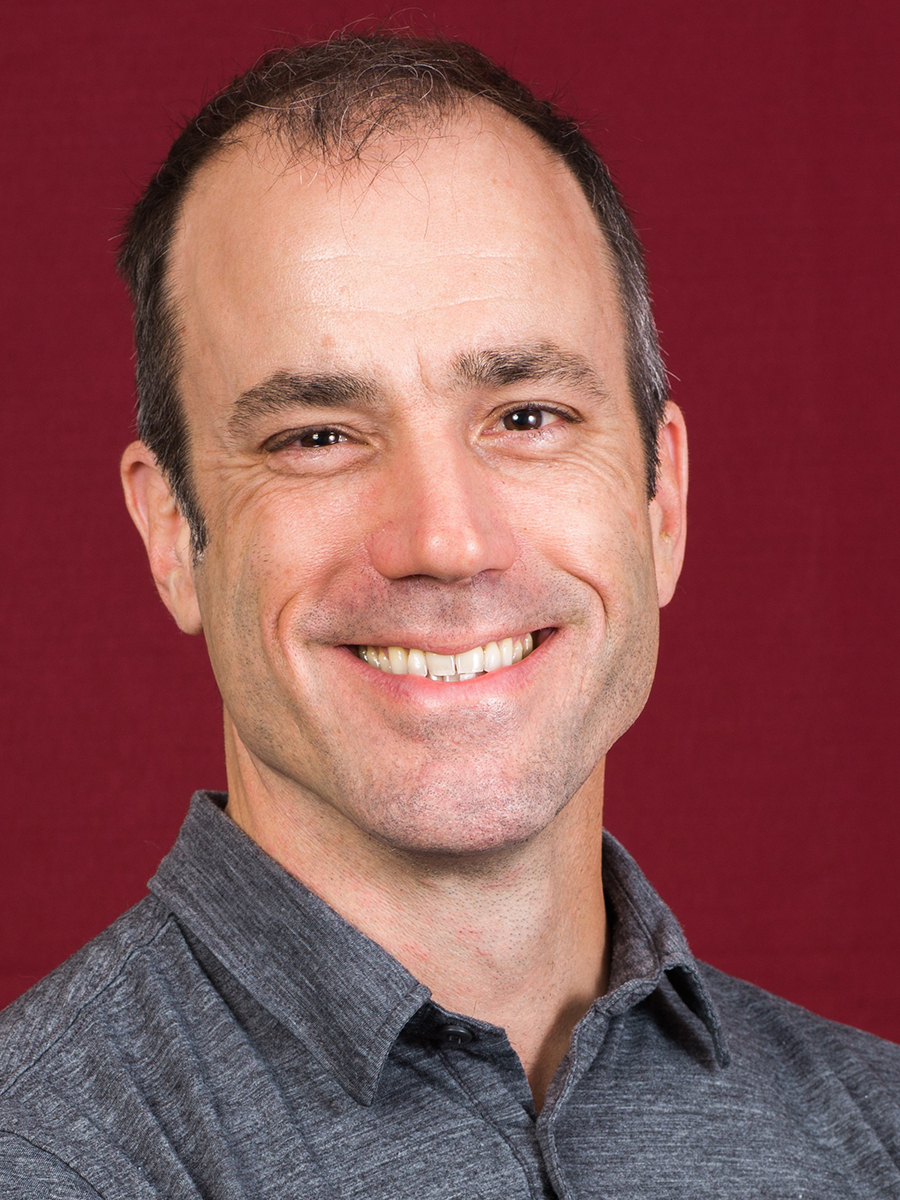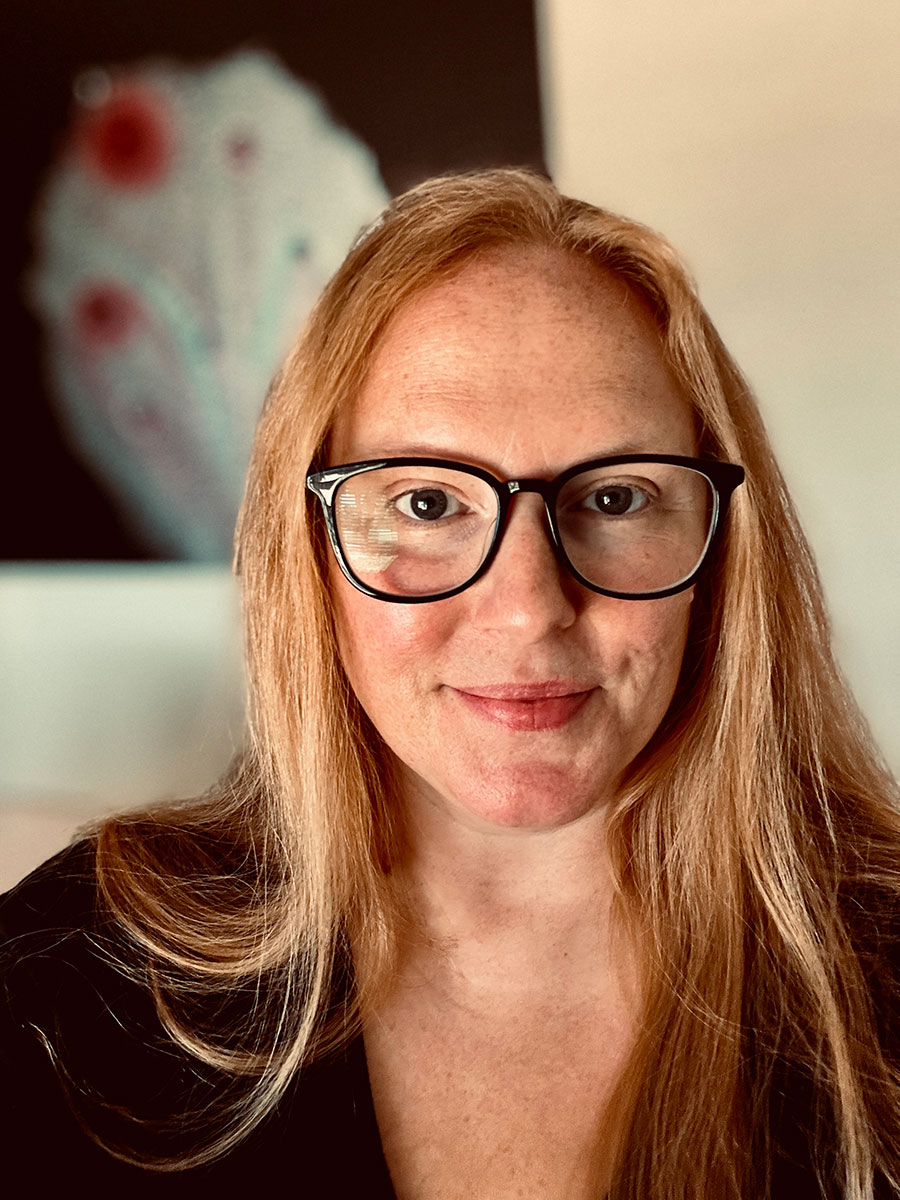ASI Promo for the Planet
Your destination for the latest news, biggest trends and best ideas to help build a more sustainable and socially responsible industry.

Sustainability
Goldstar Adds Grosche Drinkware, Dock & Bay Towels to Lineup
The Counselor Top 40 supplier said the B Corp certified brands mesh well with its commitment to thoughtful design and sustainable choices.

Products
Trimark Inks Exclusive Partnership With Redwood Classics Apparel
The division of Counselor Top 40 supplier PCNA (asi/66887) says it’s offering exclusive Canadian-made apparel from the Toronto-based supplier of pr...

Sustainability
Promo Lessons From Patagonia’s Bold ‘Nothing We Do Is Sustainable’ Report
The clothing brand released its first-ever sustainability report and got candid about its progress and imperfections.
Highlighted Sustainability Stories View All Sustainability Stories
of promo end-buyers ages 25 to 34 say it’s important that the companies they work with offer eco-friendly products.
(ASI Research)
Watch & Learn
From in-depth interviews with industry experts to quick-hit videos with actionable tips and smart strategies, these videos have you covered.
of promo end-buyers say it’s important that the companies they work with offer socially responsible products.
(ASI Research)
What Can You Do?
Unsure of how to handle unwanted or unusable merch? Confused about how to measure your company’s carbon footprint? Here are some resources from around the print and promo industry – and beyond – to help you strategize.
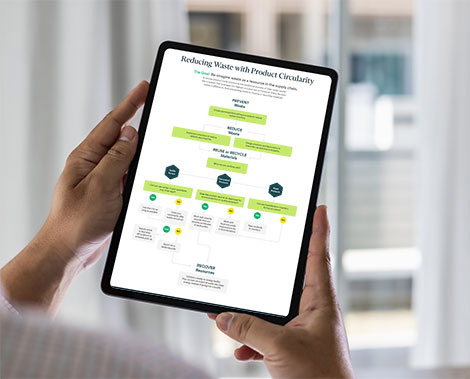
Create a Waste Decision Tree
Counselor Top 40 supplier SanMar (asi/84863) published a decision tree for handling textile scraps, decorated products and blank products on its A Canvas for Good sustainability page.

Donate or Recycle End-of-Life Merch
When companies rebrand or get acquired, many will dispose of their obsolete merch – and oftentimes it ends up in the trash. For example, 85% of textiles never get recycled, according to stats from the EPA. However, there are a variety of services available to help divert swag from landfills.
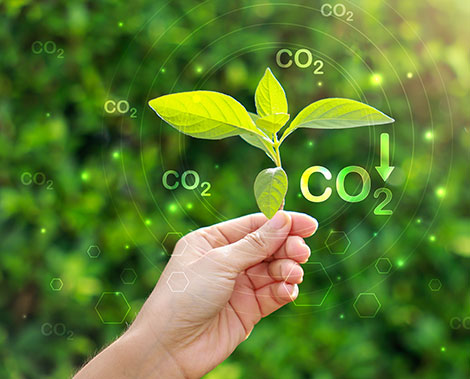
Reduce Your Carbon Footprint
There are countless resources available to help you calculate your greenhouse gas emissions and develop plans to reduce them (as well as purchase high-quality carbon offset projects) on the path to reaching net zero. Here are a few to get you started.
of promo end-buyers 44 and younger say they’re more likely to do business with a vendor that’s a Certified B Corp.
(ASI Research)
Sustainability From A to Z
Ever wonder what “carbon neutral” really means? Or what makes a shirt organic? And what’s the difference between compostable and recyclable, anyway? The more you delve into the realm of sustainability, the more terms there are to learn. Use this glossary to get quick definitions of some of the more common concepts and materials in the industry.
Alternative energy
Sustainable energy sources that do not deplete natural resources or harm the environment. Alternative sources of energy such as solar, wind, tide, waves, rain and geothermal heat are renewable and naturally replenished.
Biodegradable
Items – such as wood, paper products and natural fibers like cotton and wool – that can be broken down by natural processes into their basic components and return to the earth. Ideally, such materials will break down quickly, rather than taking years to do so, and leave nothing harmful behind when they do. Be aware that not everything marketed as biodegradable meets those standards.
Biodiversity
This refers to the variety of life in a particular habitat or ecosystem. Biodiversity is crucial for a healthy planet and the process that support all life on Earth, including humans.
Bluewashing
Bluewashing, a cousin to the more widely known term greenwashing, is the practice of companies overstating or being misleading about their commitment to social responsibility and ethical practices to improve their public image. An example could be a fashion brand touting ethical practices, despite reports surfacing of poor working conditions and exploitation within their supply chain.
Carbon dioxide equivalent (CO2e)
This is a standardized unit of measurement used to compare the climate impact of different greenhouse gases. It expresses the emissions of other gases, like methane or nitrous oxide, in terms of the equivalent amount of carbon dioxide (CO2) that would cause the same level of global warming.
Carbon footprint
The total amount of greenhouse gas emissions (such as carbon dioxide and methane) from the production, use and disposal of a particular product or service. According to the Nature Conservancy – which features a carbon footprint calculator on its site – the average American has a carbon footprint of 16 tons, one of the highest in the world.
Carbon neutral
A company becomes carbon neutral when it calculates their carbon emissions, then works to reduce the emissions that it can, and offsets those it cannot by investing in projects like reforestation. The goal is to have a net-zero carbon footprint.
Carbon offset
Businesses, governments and even individuals can pay someone else to cut greenhouse gases from the atmosphere, whether by investing in solar or wind energy, planting trees, restoring rainforests or some other means. The buyers then get the “credit” for that reduction, helping to zero out their own emissions. The practice is not without controversy, but has grown into a multibillion-dollar industry. Vox has a good explainer with details on how carbon offsets work.
Carbon sink
This can be anything, natural and unnatural, that absorbs and accumulates carbon dioxide, removing it from the atmosphere. Forests, soil and oceans are considered the world’s largest carbon sinks. Recent human activity has led more carbon dioxide to be released into the atmosphere, presenting more carbon than these carbon sinks are able to hold. This has posed a problem for the balance of the carbon cycle, illustrating the importance of lowering carbon emissions.
Chain of custody
How a product is traced through a supply chain to determine whether it meets environmental criteria of a certification or ecolabel.
Circular economy
The traditional economic model is to take, make and waste – a linear progression. Those in sustainability spheres aspire to a more circular model, based on three principals and driven by design: eliminate waste and pollution, circulate products and materials, and regenerate nature. “A circular economy decouples economic activity from the consumption of finite resources. It is a resilient system that is good for business, people and the environment,” says the Ellen MacArthur Foundation.
Climate change
Long-term shifts in temperatures and weather. Though it can occur naturally, human activity has been a main factor in climate change in modern times, particularly through the burning of fossil fuels, which produce heat-trapping gases. This simple guide from the BBC explains it in more detail.
Closed-loop system
The idea with a closed-loop system is to use the same materials over and over again in production, both to conserve natural resources and to keep items from ending up in a landfill. An apparel company that encourages consumers to mail in old shirts, which are then broken down into recycled fibers and turned into a new shirt, is one example. Patagonia’s Worn Wear program, where people send in pre-worn garments for repair and resale is another.
Compostable
A product that can decompose into nontoxic natural elements, at a rate similar to other organic materials. Compostable products should not be recycled, nor should they be thrown in the trash, since such products require special conditions to biodegrade that aren’t necessarily found in a landfill. You can take them to facilities that specialize in composting or sometimes add them to home compost piles.
Corporate Social Responsibility (CSR)
The policies and practices a business adopts to support various social and environmental improvements.
Cradle-to-cradle design
Also called circularity, this is when brands design products with their end-of-life in mind, figuring out ways from the very beginning of the product’s lifecycle how to keep them out of a landfill, whether it’s through reuse, composting or recycling.
Decarbonization
This refers to how companies, organizations and governments are reducing or eliminating carbon emissions by transitioning to low-carbon or no-carbon energy sources and practices.
Deforestation
The action of clearing a wide swath of trees. It decreases habitat and threatens biodiversity while contributing to other problems that include climate change, soil erosion, flooding, increased greenhouse gases in the atmosphere and more, environmental scientists say.
Ecolabel
A visual communication tool showing that a particular product, service or company meets specific environmental standards.
Environmental, Social and Governance (ESG)
Investors and others will look at metrics from these three areas to evaluate how advanced a company or other entity is with sustainability goals.
Extended producer responsibility (EPR)
EPR legislation shifts responsibility for managing a product’s end-of-life from consumers and local governments to the companies that produce, distribute or sell them. Several states have EPR laws related to packaging, and some are also looking at EPR for textiles. The Circular Action Alliance (CAA), a producer responsibility organization (PRO), has updates on implementation in the five states that have passed EPR laws for paper and packaging so far.
Fair trade
An arrangement to help producers in developing countries achieve equitable trade relationships. The idea is to provide sustainable living wages and safe working conditions for farmers and workers around the world.
Greenhouse effect
A process that involves the trapping of the sun’s warmth in the lower atmosphere, resulting in a warmer planet.
Greenhouse gas
Carbon dioxide, methane and other gases that let sunlight pass through the atmosphere, but prevent that heat from leaving the atmosphere.
Greenwashing
When a company makes sustainability claims for marketing purposes without actually making any real efforts to follow through. Examples include oil and gas companies touting low-carbon energy products when the vast majority of their offering is still traditional fossil fuel, or brands announcing plans to end virgin plastic use without outlining clear benchmarks or timelines for doing so. On a smaller scale, it could be a brand logo that incorporates nature-themed graphics to piggyback on positive public sentiment toward “green” products, without making changes to the products being sold. The term was coined in 1986 by environmentalist Jay Westerveld.
Lifecycle assessment (LCA)
Sometimes referred to as lifecycle analysis, an LCA is a methodology used to evaluate the environmental impact associated with all stages of a product or service’s lifecycle, from raw material extraction to disposal.
Microplastic pollution
Tiny plastic particles that result from both commercial development and the breakdown of larger plastics and cause harm to the environment. There are 24.4 trillion pieces of microplastics – equivalent to about 30 million plastic water bottles – in the world’s upper oceans, according to a recent estimate.
Natural capital
ust as corporate capital refers to all company assets, natural capital is the world’s stock of natural resources. Natural capital is critical for sustaining life and economic activity, yet it’s often disregarded and devalued. While damage to the environment and depletion of natural resources don’t have immediate financial costs, it raises global risks. This resource from Simplicable provides more information on the basic types of natural capital.
Organic
A type of agriculture that eschews chemical pesticides, hormones, synthetic fertilizers and other toxic materials throughout cultivation. Genetically modified (GMO) seeds are also prohibited. Organic is also a food-labeling term, showing that something was produced under the authority of the Organic Foods Production Act.
PFAS
A group of manmade perfluoroalkyl and polyfluoroalkyl substances, often referred to as “forever chemicals” because they don’t break down in the environment. There are thousands of PFAS, and they appear in a broad spectrum of products, from firefighting foam to carpets, shampoo, mascara and some grease-resistant paper. PFAS are often used in durable water-repellent (DWR) coatings on various performance fabrics to give them water- and stain-resistant properties, though brands have been developing alternatives in response to health and environmental concerns. PFAS have been linked to a range of diseases, including cancer and diabetes.
Plant-based plastic
A type of bioplastic created from agricultural scraps, such as corn, sugarcane, wheat or food waste. Some bioplastics are biodegradable and compostable, but environmentalists caution that they’re not as green as they seem.
Post-consumer recycling
Reprocessing items previously used by a consumer, like cans and water bottles, into a new product.
Pre-consumer recycling
Material that’s never reached the end-user and is diverted from a landfill during the manufacturing process. An example would be when cotton scraps are gathered from the cutting-room floor and respun into yarn to make new fabric.
Recyclable
An item that is able to be recycled into a new product after use.
Reforestation
The act of replanting trees in areas that have been affected by natural disturbances like wildfires and drought as well as unnatural disturbances like logging, mining and development. Restocking forests can help to mitigate climate change.
Regenerative agriculture
A holistic approach to farming and cultivation that focuses on interconnection and the ecological system as a whole. The goal is to improve the environment by increasing things like soil fertility and biodiversity, while also improving water quality and quantity.
Scope 1, 2 & 3 Emissions
Scope 1 emissions are direct GHG emissions that come from sources controlled or owned by an organization, such as company vehicles and equipment. Scope 2 emissions are indirect emissions associated with the purchase of electricity, heating and cooling. Scope 3 emissions, which typically make up anywhere from 65% to 95% of a company’s overall carbon impact, include indirect emissions that occur up and down a product’s value chain. Scope 3 emissions include purchased goods and services, business travel, capital goods, transportation and distribution, as well as processing, use and end-of-life treatment of sold products.
Social enterprise
A business that aims to make a profit while also working to change the world for the better.
Sustainability
Meeting the needs of the present without compromising the ability of future generations to do the same. It’s often broken down into three pillars: environmental, economic and social.
Triple bottom line
This breaks down a company’s performance goals into three areas: people, planet and profit. The idea is to improve performance over the long term by following more-sustainable business practices that take all three areas into account.
Upcycling
The process of transforming products into something new, perceived to be of greater value than the original. In the promo industry, a number of brands are making upcycled merch; one example is screen-printing designs onto pre-worn tees.
Value proposition
The values and intentions of a company are implemented in its marketing strategy through value propositions. A common value proposition adopted by many businesses is sustainability. This can attract consumers with similar environmental concerns, who hope that their support of the company will enable them to deliver on their goals.
Vegan
A diet and lifestyle that avoids animal-derived products.
Water footprint
The total volume of freshwater used, directly or indirectly, to produce goods and services. Experts say it’s an important calculation to help manage water resources sustainably.
Wish-cycling
When you recycle items without knowing whether they can actually be recycled, but expecting them to be properly dealt with anyway.
Zero waste
A movement focused on waste prevention by encouraging reuse of products so that no trash is sent to landfills, incinerators or the ocean. Recycling, repurposing and composting are several ways items are diverted from landfills to get closer to zero-waste goals.
Bamboo
This fast-growing grass reaches its maximum height in one growing season, and even if it’s used for lumber, it can regenerate and return the following season, unlike hardwood trees. Bamboo can be used as flooring, furniture, mats, coffee cups, utensils and tableware or even pulped and made into drinking straws. It can also be made into fabric; however, the process to do so is typically chemical-heavy, and many dispute the sustainability of bamboo textiles.
ECONYL
A regenerated nylon created by engineering company Aquafil, ECONYL is made from different types of nylon waste, including abandoned fishing nets recovered from the ocean and post-consumer carpeting. For every 10,000 tons of raw material used to produce ECONYL, 70,000 barrels of crude oil is saved, according to Aquafil.
Hemp
Sometimes referred to as a “golden fiber” because of its beneficial qualities, hemp is strong, durable and has great shape retention compared to other natural fibers. It grows quickly and doesn’t require herbicides, fungicides or pesticides to flourish; plus, it requires less water and land to grow. It’s often blended with other fibers to create a soft fabric with an array of performance properties, according to apparel experts.
Organic cotton
Typically grown with low-impact production systems meant to replenish and maintain soil fertility, organic cotton is grown without the use of chemical pesticides and synthetic fertilizers. The use of genetically modified (GMO) seeds is also prohibited. Organizations like the Global Organic Textile Standard (GOTS) define criteria for organic cotton, backed up by independent certification of the supply chain. Critics, however, say it’s easy to game the system, noting that a significant portion of what’s advertised as certified organic cotton might not actually be organic. A better system, they say, is to focus on empowering the farmers themselves to use regenerative agriculture practices, improve supply chain transparency and make measurable impact a hallmark of organic cotton.
Recycled cotton
Fabric that can be made from either pre- or post-consumer waste. In other words, some of it comes from scraps gathered from an apparel factory floor, and some comes from old T-shirts that consumers send back to various clothing companies. The textiles are sorted by color then run through a machine that shreds the fabric and turns it into a raw fiber, which is then spun back into yarn. The process doesn’t involve dyeing or water usage, making it more sustainable than traditional apparel production. However, recycled cotton fibers are generally not as high quality as new cotton, so they’re often blended with other fibers to add strength and softness and thus can’t be recycled again.
REPREVE
Unifi makes this brand of polyester that’s made from 100% recycled materials, including post-consumer plastic bottles and pre-consumer waste. According to the company, it helps offset the use of petroleum, emitting fewer greenhouse gases and conserving water and energy, when compared to virgin polyester fiber. Plastic bottles and other waste are sourced from material-recovery facilities, then chopped, washed and melted at a processing center in North Carolina, where they’re transformed into flake and then chip. The chip is heated, extruded and spun into fiber. REPREVE fabrics include FiberPoint, a proprietary tracer technology used to analyze and validate content claims.
rPET
The shortened name for recycled polyethylene tetraphyte (PET), or recycled polyester. Often, it’s made from things like discarded plastic water bottles, diverting them from landfills. Recycled polyester has a smaller carbon footprint than virgin polyester, as it requires fewer resources to create. The downside, however, comes at the end-of-life, since these garments typically can’t be recycled and end up in the very landfills those plastic bottles were once saved from. Another issue is microfiber shedding – when microplastics from a garment shed in the wash and end up in oceans and other waterways.
TENCEL
This brand-name lyocell fiber is a “regenerated cellulose” created by dissolving wood pulp from trees – typically birch, beech, spruce and eucalyptus – with a chemical solvent, then pushing it through an extruder to form fibers. According to the company, Tencel uses sustainably sourced natural raw wood fibers and environmentally responsible production processes. It takes less energy and fewer chemicals to produce Tencel compared to rayon. Tencel fiber is also certified as compostable and biodegradable. Tencel, used in shirts, pants, bedding and other products, has moisture-absorbing and sweat-wicking properties. It’s also easily moldable and results in a soft, yet durable, final product.
Tritan Renew
A durable plastic made by chemical company Eastman, Tritan Renew is made with up to 50% certified recycled content, using the company’s molecular recycling technology.
Vegan leather
Consumers who want a leather look without harming animals often turn to vegan leather. Traditionally, it’s made of polyurethane (PU) or polyvinyl chloride (PVC), both forms of plastic, neither of which are biodegradable or eco-friendly. More environmentally friendly versions include leather substitutes made from cork, pineapple, apple, cactus and mushroom.
Wheat straw plastic
Made from the leftover stalks of wheat plants after the grain is harvested, wheat straw plastic is often used in food-safe containers, packaging materials and other items. While wheat straw is biodegradable, some types require industrial composting facilities to break down properly. Also, wheat straw plastic is often added as a composite with other plastics like polypropylene, making it less sustainable, since polypropylene isn’t biodegradable and the combined materials is likely less recyclable.
of promo end-buyers ages 25 to 34 say it’s important that the companies they work with have giveback programs.
(ASI Research)
Sustainable Labels & Certifications
Figuring out whether a certain business or product is sustainable can be overwhelming. It’s such a broad term and means different things to different people – and that doesn’t even get into the so-called “greenwashing” that runs rampant with marketers trying to piggyback on green goodwill with shoppers. To make the task a bit easier, we compiled this list of sustainable labels and certifications; while not exhaustive, it runs down the more common ones related to various sustainability concerns.
1% for the Planet
This nonprofit was created by Yvon Chouinard, founder of Patagonia, and Craig Mathews, founder of Blue Ribbon Flies, as a way to fund diverse environmental organizations. Business members join the network and commit to donating the equivalent of 1% of gross sales – combining monetary, in-kind and approved promotional support – directly to environmental nonprofits. 1% for the Planet certifies member donations, reviewing and confirming sales and donation details annually. So far, members have invested more than $350 million toward environmental causes.
American Sustainable Business Network (ASBN)
This is a membership organization, representing more than 250,000 businesses. It advocates for solutions that support an equitable, regenerative and just economy that benefits people and planet. The ASBN was formed by the merger of the American Sustainable Business Council and Social Venture Circle, which became effective Jan. 1, 2022.
Aware
A Dutch company founded by two sustainable fashion experts, Aware offers hybrid traceability technology for textiles, combining physical tracers with a public blockchain to create a virtual passport that authenticates sustainable materials throughout the production process. The digital product passport relies on primary data, since all information is shared and validated by each maker in the supply chain.
B Corp
Overseen by the nonprofit B Lab, B Corp certification is a designation that a business is meeting high standards of verified performance, accountability and transparency on factors from employee benefits and charitable giving to supply chain practices and input materials. Companies must receive a score of 80 or above on the B Impact Assessment and pass a risk review to receive the designation. They also must make a legal commitment changing their corporate governance structure to be accountable to all stakeholders, not just shareholders, and achieve benefit corporation status if it’s available in their jurisdiction. B Lab notes that the certification is holistic, not exclusively focused on a single social or environmental issue. So far, more than 9,600 companies across 161 industries and 102 countries have achieved the certification.
Better Cotton Initiative (BCI)
Better Cotton is the largest cotton sustainability program in the world, with more than 2,700 members. Better Cotton-licensed farmers produce cotton in a way that cares for the environment, minimizing the negative effects of fertilizer and pesticides and caring for water, soil health and natural habitats. In 2023, it launched a traceability program, allowing Physical Better Cotton to be traced back to country of origin.
Better Work
Better Work, a collaboration between the United Nations’ International Labour Organization (ILO) and the International Finance Corporation, is a comprehensive program that brings together all levels of the garment industry to improve working conditions, respect of labor rights and boost the competitiveness of apparel and footwear businesses.
BioPreferred
BioPreferred is a voluntary labeling initiative from the USDA, allowing businesses to display the USDA Certified Biobased Product label on products to show they meet or exceed the minimum biobased content standard. Biobased products are derived from raw materials such as plants and other renewable agricultural, marine, and forestry materials. This label allows consumers to easily identify that the biobased product has been third-party tested and verified. All biobased products seeking eligibility to participate in the program must demonstrate “innovative approaches in the growing, harvesting, sourcing, procuring, processing, manufacturing, or application of the biobased product.”
Bluesign
Switzerland-based bluesign is a full-service solutions system with a focus on sustainable chemistry for the textile industry. The certification applies to chemicals, processes, materials and products and helps manufacturers properly manage chemicals and replace harmful substances with safer alternatives. Bluesign-approved factories must meet stringent standards for pollution control. Several promo suppliers have become bluesign System Partners, signaling a commitment to responsible sourcing and more sustainable production.
CarbonNeutral
Climate Impact Partners, a company that specializes in the carbon market, helps companies achieve CarbonNeutral certification in accordance with the CarbonNeutral Protocol, a leading global framework for carbon neutrality.
Cascale
Formerly the Sustainable Apparel Coalition, this global nonprofit consists of 300 consumer goods brands, retailers, manufacturers, sourcing agents, trade associations, academic institutions and more, working to combat climate change and promote social justice throughout the supply chain. Cascale offers the Higg Index, a suite of five tools that assess and measure the social and environmental performance of the value chain and environmental impacts of products. The tools are the Higg Facility Environmental Module (Higg FEM) used to assess the environmental impact of product manufacturing; the Higg Facility Social & Labor Module (Higg FSLM), promoting safe and fair social and labor conditions; the Higg Materials Sustainability Index (Higg MSI), which evaluates the cradle-to-grave impacts of different materials; the Higg Product Module (Higg PM), which measures the cradle-to-grave environmental impacts of a product; and the Higg Brand & Retail Module (Higg BRM), which assesses sustainability performance across 11 impact areas in environmental, social and governance pillars.
Climate Label Certified
Previously known as Climate Neutral, The Change Climate Project certifies companies on climate accountability, by adopting a standardized carbon fee and actively funding projects that reduce emissions. Certification requires companies to set a climate transition budget based on total annual emissions and dedicate that budget to climate solutions.
ClimeCo
Sustainability company ClimeCo offers several certification programs to help businesses communicate their sustainability efforts. The ClimeCo Certified Product Protocol evaluates a product’s cradle-to-grave lifecycle and carbon footprint value. Its business certification program helps ensure that the carbon footprint generated by regular business activities can be mitigated.
Cradle to Cradle
The Cradle to Cradle Products Innovation Institute is working to power the shift to a circular economy, setting a global standard for materials, products and systems that positively impact people and the planet. The institute offers several certifications: Cradle to Cradle Certified is a multi-attribute standard used globally by designers, brands and manufacturers for designing and making products that enable a healthy, equitable and sustainable future. Version 4.1 of the Cradle to Cradle Certified Product Standard, effective July 2024, addresses interconnected sustainability topics across design and manufacturing phases. C2C Certified Material Health verifies that chemicals and materials used in a product prioritize protection of human health and the environment. C2C Certified Circularity focuses on product circularity and offers measurable goals to guide all aspects of development, from design and sourcing to packaging and material health.
Ecologi
This Certified B Corp social enterprise helps businesses and individuals set eco-goals and help fund carbon offsetting and reforestation projects to lower their carbon footprint. As part of its efforts, the organization hires and trains local people to plant native tree species to help reduce greenhouse gas emissions. Ecologi members have funded more than 80 million trees and avoided more than 3 million tons of CO2e (carbon dioxide equivalent), according to the company.
EcoVadis
Founded in 2007, EcoVadis has grown to be one of the world’s largest providers of business sustainability ratings with a global network of over 90,000 rated companies. The company uses a Sustainability Scorecard methodology based on international sustainability standards including the Global Reporting Initiative, the United Nations Global Compact and the ISO 26000. The scorecard illustrates performance across 21 indicators in four themes: environment, labor & human rights, ethics and sustainable procurement.
ENERGY STAR
For a building to be certified as ENERGY STAR, it must meet strict energy-performance standards set by the Environmental Protection Agency (EPA), earning a score of 75 or higher on the EPA’s 1-100 scale. That shows it performs better than at least 75% of similar buildings nationwide. Certification is given annually, and the application must be verified by a third-party licensed professional.
Equal Exchange
Equal Exchange, focused on Fair Trade food products, has a mission to build long-term trade partnerships that are economically just and environmentally sound. The idea is to foster mutually beneficial relationships between farmers and consumers.
Fair Labor Association (FLA)
This organization has been around since 1999 and operates under the conviction that “all goods should be produced fairly and ethically,” bringing together three groups – universities, civil society organizations and socially responsible companies – to create sustainable solutions to solve systemic labor issues. The FLA offers tools and resources to businesses, delivers training to factory workers and management, conducts due diligence through independent assessments and advocates for greater accountability and transparency in supply chains.
Fairtrade Certified
Fairtrade America, a part of the Fairtrade International system, certifies organizations, brands and products that meet its rigorous social, economic and environmental standards. The brands must be independently audited by FLOCERT. Fairtrade standards are designed to tackle poverty and empower producers in the poorest countries in the world; the organization’s Fairtrade label “is the most recognized and trusted sustainability label in the world,” according to Fairtrade International’s website.
Fair Trade Certified
The nonprofit Fair Trade USA is the leading certifier of fair trade products in North America. The Fair Trade Certified seal on a product shows that it was made according to standards that promote sustainable livelihoods and safe working conditions, protection of the environment, and strong, transparent supply chains. According to the nonprofit, the seal is given to thousands of products, sending $740 million to farmers and workers since 1998.
Forest Stewardship Council (FSC)
This organization has been around for about 25 years and is devoted to promoting sustainable forest management. The FSC provides two main types of certification: FSC Forest Management and FSC Chain of Custody. An independent organization audits the forest or supply chain to ensure businesses meet FSC standards, which cover issues ranging from environmental impact and community relations to workers’ rights and monitoring and assessment. The FSC also has three product labels: FSC 100%, which means all the materials are sourced from certified forests; FSC Recycled, which means products are made from 100% recycled content, whether pre- or post-consumer; and FSC Mix, which means products are made from a combination of certified forests, recycled materials or FSC-controlled wood.
Global Organic Textile Standard (GOTS)
This organization guarantees organic fibers, from the field to fashion, using a quality assurance system based on on-site inspection and certification of the entire textile supply chain. According to GOTS, it’s a “stringent voluntary global standard for the entire post-harvest processing of apparel and home textiles made with certified organic fiber and includes both environmental and social criteria.”
Green America
This organization certifies companies that are committed to using businesses as a platform of social change. Companies that receive the Green Business Certification must meet and exceed a set of standards to operate a values-based enterprise that follows the principles of social justice and environmental sustainability. They must be environmentally responsible in how they source, manufacture and market materials. Gold Certified Green Businesses are a tier above the first designation, and firms can earn this distinction after completing additional work beyond the general certification.
Green Business Benchmark(GBB)
Green Business Benchmark is a software-as-a-service sustainability management software built for organizations to achieve greater sustainability knowledge, impact and value. The company offers businesses a way to track their progress through a sustainability scorecard. Businesses can achieve bronze, silver, gold or platinum certification through GBB.
Green C Certification
The Green C certification program was developed by the nonprofit American Consumer Council to recognize green practices among small businesses and promote corporate social responsibility.
GreenCircle Certified
GreenCircle Certified offers a number of certifications related to products, processes and operations. Companies can validate that their products contain recycled content, are closed loop items that use “life cycle thinking and environmental considerations for recycling at the end of life” or that they provide “certified energy savings.” Operations-focused certification includes areas like waste diversion from landfill, zero waste to landfill, waste system audit and sustainable manufacturing practices.
Green Seal
A pioneer in the ecolabel movement, Green Seal is a nonprofit organization that certifies and promotes environmentally friendly products and companies. The Green Seal has become a universal symbol and certification specified by more than 100 federal, state and local purchasing policies. The application process and standard is different for each industry. Certified products will automatically earn Amazon’s Climate Pledge Friendly badge.
ISO
The ISO 14001 certification is an independent, well-respected program for companies or organizations that follow the correct framework for setting up an effective environmental management system. Benefits of the certification include helping business owners demonstrate regulatory requirements, encouraging better environmental performance from suppliers, increasing stakeholder confidence through strategic communication, improving company reputation and more. An organization or company can earn this certification to ensure an independent certification body is continuously auditing, measuring and improving the company’s environmental impact.
LEED
This certification, an acronym for Leadership in Energy and Environmental Design, is given out by the U.S. Green Building Council (USGBC). A building project earns points by meeting standards for areas like carbon, energy, water, waste, transportation, materials, health and indoor environmental quality. Projects go through a verification and review process and can be awarded with various levels of certification: Certified, Silver, Gold and Platinum. According to USGBC, there are more than 100,000 buildings participating in the program today.
National LGBT Chamber of Commerce (NGLCC)
The NGLCC says it’s the exclusive certifying body of LGBTQ-owned businesses. Certified LGBTBE companies and other allied small businesses can participate in educational sessions, mentorship programs, leadership training and other programs offered through NGLCC, according to the chamber.
National Minority Supplier Development Council (NMSDC)
The NMSDC provides certification for Minority Business Enterprises (MBEs), which it defines as for-profit businesses that are at least 51% owned, managed and controlled by a member or members of a qualified minority group. To be considered a member of a qualified minority group, an individual must be a United States citizen who is Asian-Indian, Asian-Pacific, Black, Hispanic or Native American, according to NMSDC.
OEKO-TEX
A group of 17 independent research and test institutes in Europe and Japan is responsible for the joint development of test methods and limit values to create the OEKO-TEX standards. It offers a number of labels that show textiles have been tested for harmful substances and have been made with socially responsible and ecologically friendly processes.
One Tree Planted
This nonprofit partners with reforestation organizations across the globe. For each dollar donated, one tree is planted. Since 2014, it has planted over 135.5 million trees across 82 countries. It has restored more than 292,000 acres of forest around the world, and made 106 cities greener by planting urban trees.
Plastic Pollution Coalition
This global alliance of more than 1,200 organizations, businesses and thought leaders in 75 countries works to rid the world of plastic pollution and its impact on humans, animals, waterways, oceans and the environment. It’s a project of nonprofit Earth Island Institute.
Rainforest Alliance
Rainforest Alliance certification helps farmers produce better crops, adapt to climate change, increase productivity and reduce costs, according to the organization. Rainforest Alliance Certified crops are produced according to a rigorous sustainability standard, with detailed criteria covering environmental, social and economic sustainability.
Regenerative Organic Certification (ROC)
This is a relatively new certification for food, textiles and personal-care ingredients, overseen by the nonprofit Regenerative Organic Alliance, which was founded by Patagonia, Dr. Bronner’s and Rodale Institute. It requires farming communities to meet a variety of criteria that prioritize soil health, animal welfare and the social wellbeing of farmers and farmworkers.
Science Based Targets
The Science Based Targets initiative (SBTi) is meant to drive ambitious climate action in the private sector by enabling organizations to set science-based emissions reduction targets. The initiative defines and promotes best practices in emission reductions and net-zero targets in line with climate science and provides technical assistance and expert resources to companies who set science-based targets.
Sedex
This trade membership organization provides an online platform, tools and services to help businesses operate responsibly and sustainably, protect workers and source ethically. SMETA, the Sedex Members Ethical Trade Audit, helps businesses understand and make improvements to working conditions and environmental performance in their businesses and supply chain.
Social Accountability International (SAI)
This organization was created to support equitable treatment of workers and developed the SA8000 audit, emphasizing continual improvement on social performance, rather than checklist-style auditing.
Sustainable Forestry Initiative (SFI)
The Sustainable Forestry Initiative says it has a mission “to advance sustainability through forest focused collaboration.” The organization sets standards for things like forest management and offers a chain-of-custody system that tracks forest fiber content through production and manufacturing to the end product.
Sustainable Purchasing Leadership Council (SPLC)
The SPLC is a global community of purchasers, suppliers, advocates and experts committed to driving positive impact through the power of procurement. The council connects members to sustainable procurement expertise and has a track record of supporting hundreds of organizations as they design and execute meaningful sustainable procurement strategies.
Sustainable Green Printing Partnership (SGP)
The SGP is a nonprofit that certifies printing facilities’ sustainability best practices, including and beyond regulatory compliance. Its certification program was created by the printing industry for the printing industry and takes into account the entire print facility, as well as its process, product and social areas.
Textile Exchange
This global nonprofit maintains multiple certifications for the fiber and materials industry. Among them is the Organic Content Standard (OCS), an international, voluntary standard that sets requirements for third-party certification of organic input and chain of custody. One of its objectives is to provide companies with a “trusted tool to communicate organically grown content claims.” Other certifications it gives out are: Global Recycled Standard (GRS), Recycled Claim Standard (RCS), Responsible Down Standard (RDS), Responsible Wool Standard (RWS), Responsible Mohair Standard (RMS), Responsible Alpaca Standard (RAS) and Content Claim Standard (CCS).
United Nations Global Compact
This is a nonbinding United Nations pact to encourage businesses around the world to adopt sustainable and socially responsible policies and to report on their implementation. The compact has 10 principles, organized around human rights, labor issues, environmental stewardship and anti-corruption.
United Nations Sustainable Development Goals
The 2030 Agenda for Sustainable Development adopted by UN member states in 2015 has a shared blueprint for sustainability, including 17 Sustainable Development Goals (SDGs), which include goals for ending poverty, reducing inequality, tackling climate change and working to preserve our oceans and forests.
U.S. Cotton Trust Protocol
This initiative was launched in 2020 and designed to set a new standard in more-sustainably grown cotton and supply chain transparency. The program, aligned with the U.N. Sustainable Development Goals, has a mission to bring quantifiable and verifiable goals and measurement to U.S. cotton production. The program looks at six key metrics: land use, soil carbon, water management, soil loss, greenhouse gas emissions and energy efficiency.
USDA Organic
The U.S. Department of Agriculture (USDA) regulates the term “organic” as it applies to agricultural products through its National Organic Program (NOP). The USDA Organic seal can be used on products that are made of at least 95% certified organic ingredients and don’t use GMOs. The products must be certified before using the seal. Products can also use a “made with organic” label without the USDA Organic seal if they’re made of at least 70% certified organic ingredients. Products can list that they’ve been made with organic ingredients without any certification, but they can’t be described as “organic” without being certified under the NOP. (Though textiles can be NOP certified organic and display the seal, the NOP doesn’t include specific processing or manufacturing standards for textiles.)
Women’s Business Enterprise National Council (WBENC)
WBENC certification validates that a business is at least 51% owned, controlled, operated and managed by a woman or women. To become certified, business owners undergo a thorough vetting process, including review of business documentation and a site visit, according to the council.
World Fair Trade Organization
The WFTO is a global community and verifier of social enterprises that practice fair trade. The organization says its guarantee system assesses the entirety of a business, not just a specific product, ingredient or supply chain. It includes an assessment of a social enterprise’s structure and business model, its operations and its supply chains. It was created by fair trade movement experts and looks at 10 principles of fair trade – including things like fair pay and climate action – when verifying and monitoring a business.
Worldwide Responsible Accredited Production (WRAP)
This nonprofit aims to ensure that factories operate in a safe, responsible and ethical way. WRAP focuses on the ground level of the supply chain, certifying individual facilities, rather than brands or ownership groups.
of global plastic waste could be recycled by 2040 if circular economy principles are applied.
(UN Environment Programme)
Meet the Promo for the Planet Advisory Board
Raising awareness and building an education hub for sustainability issues doesn’t happen in a vacuum. That’s why we rounded up a team of industry experts who have focused their business growth on the three pillars of sustainability: people, planet and profit. As members of our advisory board, they’ll be sharing their unique perspective and helping guide our coverage. Get to know a little more about their businesses and viewpoints below.
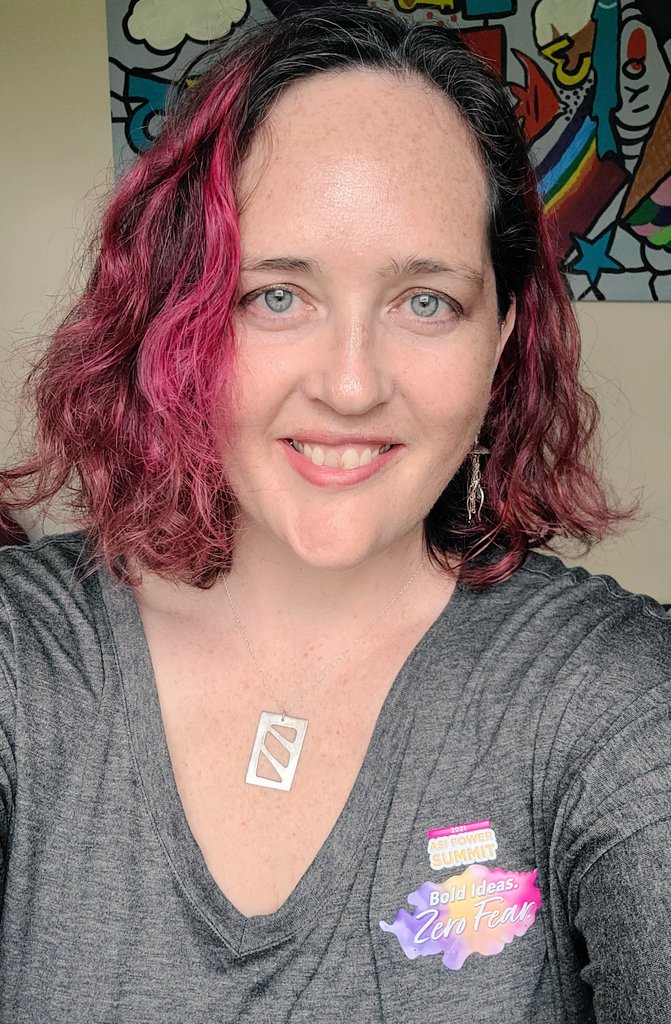
Theresa Hegel
Executive Editor, Special Projects & Sustainability, ASI
Email | Instagram
Hegel has been a writer and editor with ASI for more than a decade, with a particular focus on sustainability and apparel. A former newspaper journalist – with career highlights that included shadowing a local ghost-hunting group to a graveyard at midnight and interviewing a legally blind art teacher – Hegel has won dozens of regional and national awards for her work, including a 2023 Jesse H. Neal Award for Best Range of Work by a Single Author. ASI’s Promo for the Planet page, edited by Hegel, also won a national Azbee Award for Excellence in 2023 and a regional Azbee for sustainability reporting in 2024.
Why is sustainability important for the promotional products industry?
“Consumers expect brands to have a plan for making their operations more earth-friendly, and that includes marketing efforts. If the promo industry isn’t at the forefront of this movement, offering sustainable swag solutions, we’re in danger of being shut out from the conversation completely.”
What does sustainability mean to you?
“It’s about having an awareness and concern for how our actions affect other people and the earth as a whole – and making positive changes, even if they’re only one small step at a time, to improve the situation. I like to think of the campsite rule: to leave things in a better condition than you found them.”

